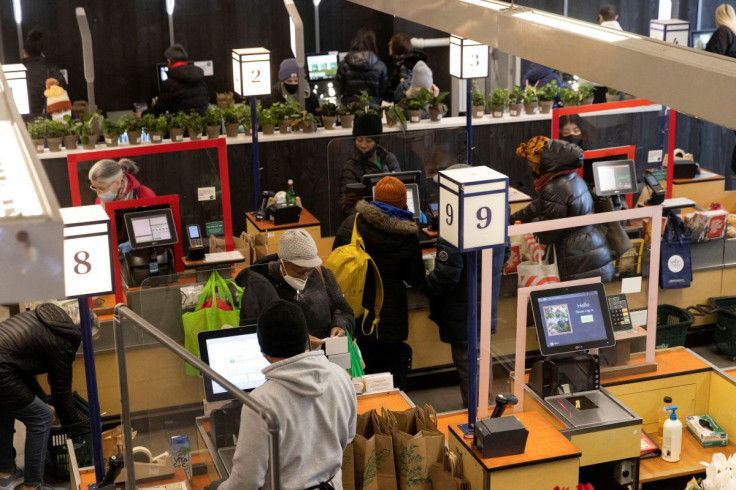U.S. Economy Contracts In First Quarter; Weekly Jobless Claims Fall

U.S. economic growth unexpectedly contracted in the first quarter as a resurgence in COVID-19 cases disrupted activity, but the decline in output paints a misleading picture of the economy amid solid domestic demand.
Gross domestic product fell at a 1.4% annualized rate last quarter, the Commerce Department said in its advance GDP estimate on Thursday. That was the first decline since the pandemic recession nearly two years ago. The economy grew at a robust 6.9% pace in the fourth quarter.
Economists polled by Reuters had forecast the economy growing at a 1.1% rate. Estimates ranged from as low as a 1.4% rate of contraction to as high as a 2.6% growth pace.
The slump in output reflected a wider trade deficit and moderate pace of inventory accumulation. While the headline figure could lead to howls about stagflation and recession from some quarters, it is not a true reflection of the economy.
Consumer spending was solid and business investment in equipment accelerated sharply. That resulted in a measure of domestic demand - excluding trade, inventories and government spending - increasing strongly from the fourth-quarter pace of 2.6%. Final sales to private domestic purchasers account for roughly 85% of aggregate spending.
The Federal Reserve is expected to hike interest rates by 50 basis points next Wednesday, and soon start trimming its asset holdings. The U.S. central bank raised its policy interest rate by 25 basis points in March, the first rate hike in more than three years, as it fights inflation. Annual consumer prices increased in March at their quickest pace in 40 years.
Even with food and gasoline prices soaring, there is no sign yet of consumers pulling back.
Strong wage gains amid a tightening labor market and at least $2 trillion in excess savings accumulated during the pandemic are providing a cushion against inflation.
Strengthening labor market conditions were reinforced by a separate report from the Labor Department on Thursday showing initial claims for state unemployment benefits fell 5,000 to a seasonally adjusted 180,000 for the week ended April 23.
Economists had forecast 180,000 applications for the latest week. According to data from Bank of America Securities, lower-income consumers, who tend to be disproportionately affected by inflation, were showing greater resilience.
Still, concerns remain that the Fed could aggressively tighten monetary policy and tip the economy into recession over the next 18 months. The housing market is already showing signs of slowing, with the 30-year fixed mortgage shooting above 5%.
But much would depend on how quickly geopolitical tensions and supply chains ease, and whether inflation subsides.
© Copyright Thomson Reuters 2024. All rights reserved.




















